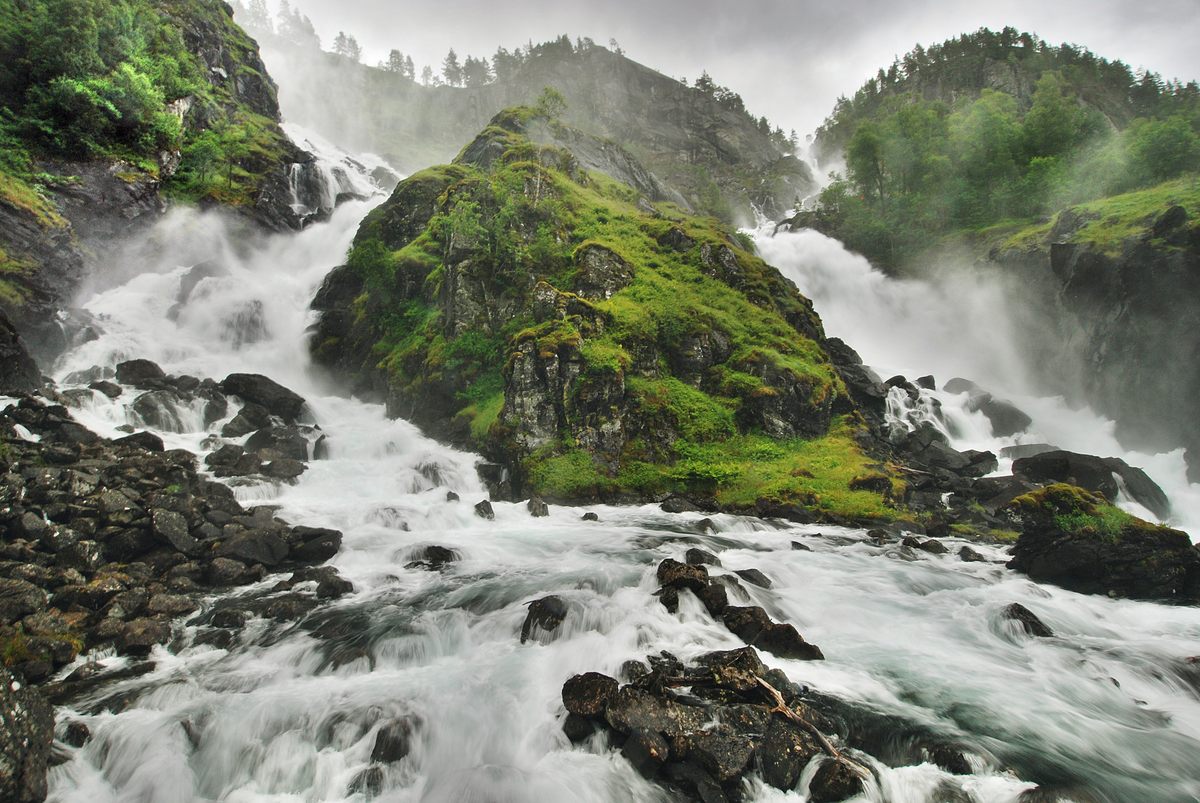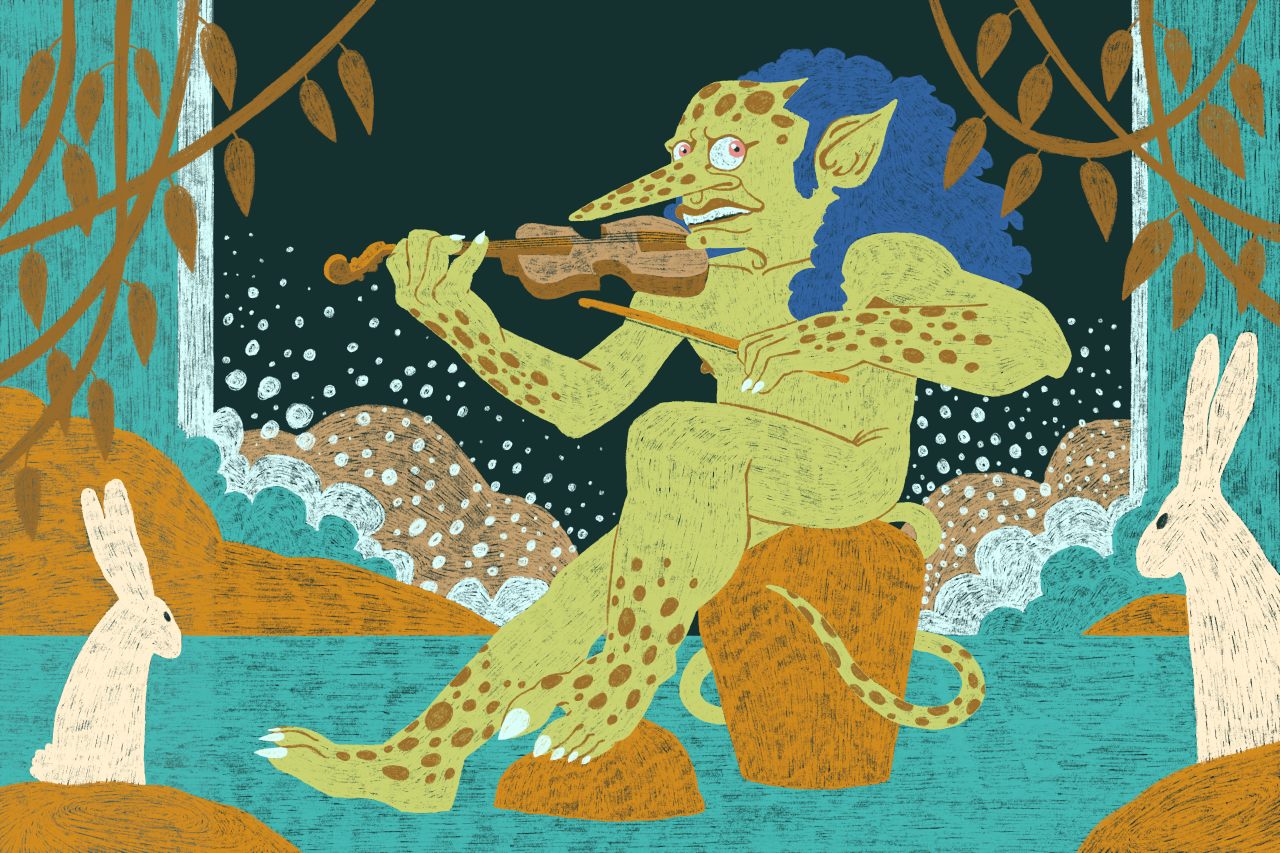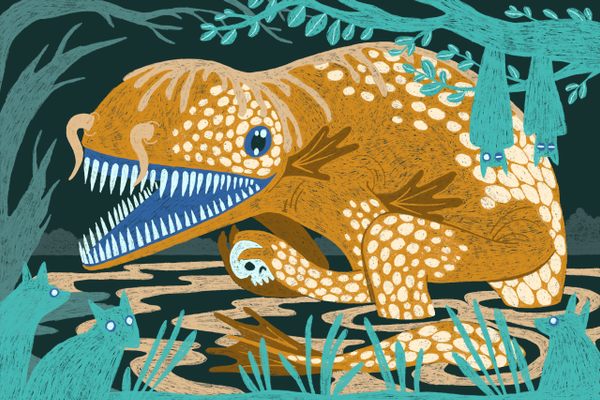This Norwegian Water Spirit Just Wants to Teach You How to Fiddle
But make sure you bring the fossegrim the proper offering—or else.
Should you find yourself wandering along the edge of a stream in a darkened Norwegian forest, you might catch the lilting sounds of a violin. At first, you wonder if it’s just the wind whistling through the branches, or perhaps a birdsong. But as the sun continues to drop, the haunting melody rises, growing more insistent. Then as you round the bend where a waterfall cascades into a shallow pool, you see him: a slender, masculine figure with glinting eyes, caressing a Hardanger fiddle with his long, thin fingers.
Meet the fossegrim, or “waterfall lord,” a guardian of Norway’s waterfalls and rivers. Depending on who you ask, this cryptid might appear as a lithe, handsome man or a gaunt, green goblin-esque figure with mangy locks. Norse mythology is full of trolls, elves, werewolves, and other sprites that wreak havoc or grant favor, depending on their whims. Within this fantastical taxonomy, the fossegrim is one of the more helpful beings—as long as you bring him a snack.
Sure, the fossegrim has a penchant for luring travelers to him on the blackest of nights, but underneath it all, this cryptid is a real artist. He plays his violin with superhuman skill and, really, just wants to teach others to do the same. Aspiring musicians should seek him out on Thursday evenings with a stolen white kid goat. The trick is to avert your eyes from the fossegrim, then throw his dinner into the waterfall.
Pick a scrawny goat and the fossegrim will begrudgingly show you how to tune a violin, but nothing more. If you show up with a particularly plump offering, however, he’ll reward your thievery by teaching you to play the violin until your fingers bleed raw. If that sounds extreme, bear in mind that it’s not all that different from what actual concert violinists go through.
According to 19th-century folklorist Edward Lumley’s Scandinavian popular traditions and superstitions, at the end of this ordeal, you’ll be able to play so masterfully that “the very trees will dance and the waterfalls stop their course.”

Since fossegrims value their privacy, keeping this whole operation on the low is crucial. Fail to keep his secret or accidentally look him in the eye, and he’ll take revenge by dancing nude in your face—really.
Seductive, musically inclined supernatural water beings are a recurring trope throughout Scandinavian, Gaelic, and Germanic lore. In Sweden, the fossegrim goes by strömkarlen and exhibits more or less the same benign tendencies. From Scottish kelpies to Icelandic hnikur, there are all sorts of reasons to stay out of the water in Northern Europe.
Far deadlier than the fossegrim is the neck or nøkk, a Norwegian demon whose shape is as mercurial as water itself. These dangerous tricksters might take the form of a beautiful human, a horse, or perhaps even treasure lurking just out of reach in the water. Young children wandering unsupervised after dark are his favorite prey. As soon as their curiosity gets the better of them, he drags them down to the depths, never to be seen again. Similar and equally ruthless is the söetrold, a sea troll known for offering a devil’s deal to sailors on the brink of capsizing. To stave off a watery grave, crew members must offer to sacrifice one of their children to be devoured by the monster.
Norse mythology, like so many other forms of lore, was passed down by whispered words and fireside tales for so many generations that it’s impossible to tell where many of these stories originated. Yet given the historic centrality of waterways to life in this part of the world, it’s not hard to imagine how thoughts of these unheimlich beings might emerge. Whether gliding through a fjord or trudging through the dense, enveloping silence of a conifer forest, the mind can play tricks—and perhaps conjure otherworldly music out of thin air.




















Follow us on Twitter to get the latest on the world's hidden wonders.
Like us on Facebook to get the latest on the world's hidden wonders.
Follow us on Twitter Like us on Facebook